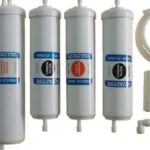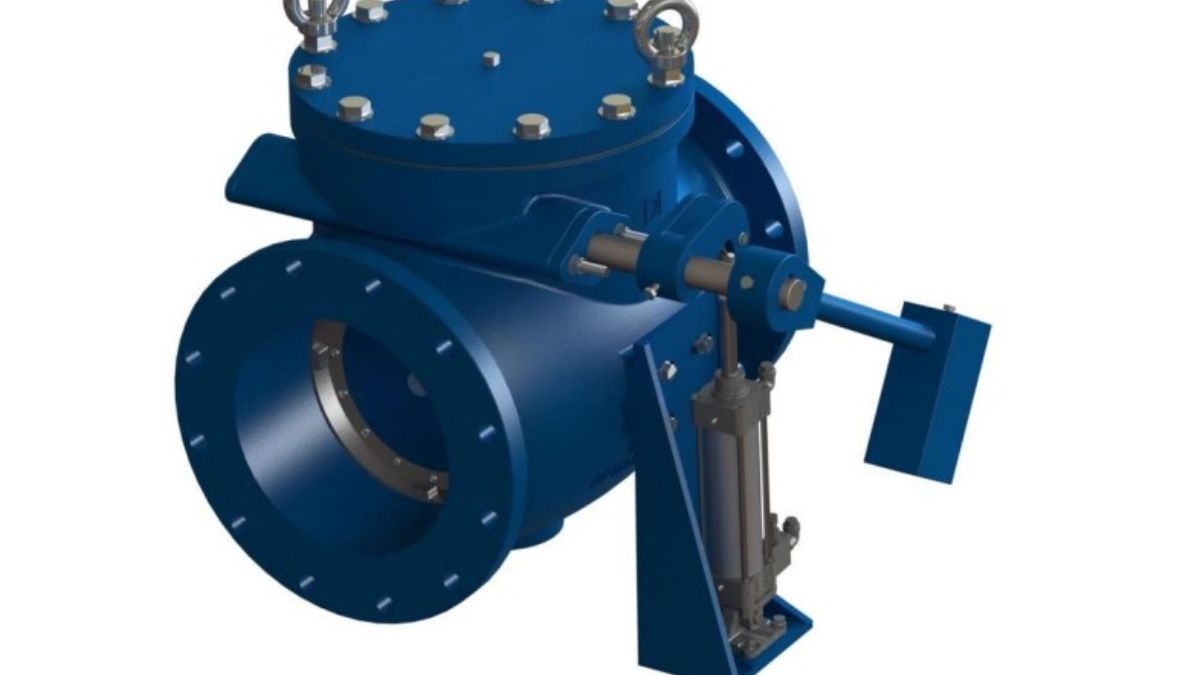The APCO (American Process Control) Check Valve Model 250 is widely used in various industries for regulating fluid flow and preventing backflow in piping systems. This essential component ensures that fluids flow in only one direction, thus protecting sensitive equipment like pumps and compressors. However, over time, like any mechanical device, the APCO Check Valve Model 250 can experience operational issues. Proper troubleshooting is crucial not only for maintaining its functionality but also for preventing costly downtime. This guide will walk you through common issues with the valve, how to troubleshoot them effectively, and provide expert advice on maintaining the valve for long-term efficiency.
Table of Contents
- Overview of APCO Check Valve Model 250
- Common Problems with APCO Check Valve Model 250
- Troubleshooting APCO Check Valve Model 250
- Lack of Proper Sealing
- Valve Not Closing
- Valve Leaking
- Valve Not Opening
- Tools Needed for Troubleshooting
- Preventive Maintenance for APCO Check Valve Model 250
- Conclusion
- FAQs
1. Overview of APCO Check Valve Model 250
The APCO Check Valve Model 250 is a spring-loaded, swing check valve designed to prevent backflow and ensure fluid flows in a single direction. Commonly used in water, wastewater, and industrial applications, this valve is known for its reliability and durability. It can be installed in both horizontal and vertical piping systems, typically protecting pumps, compressors, and other crucial equipment from damage caused by reverse flow.
Key Features:
- Material: Constructed from high-quality metals such as stainless steel and brass, designed to withstand high pressures and harsh environments.
- Sizes: Available in various sizes, usually ranging from 2 inches to 24 inches in diameter, to suit different applications.
- Spring-Loaded Mechanism: This mechanism helps the valve automatically seal when pressure drops, preventing reverse flow.
Despite its robust design, the APCO Check Valve Model 250 can face certain issues over time. Understanding these common problems and how to address them effectively is essential for keeping the valve functioning at its best.
2. Common Problems with APCO Check Valve Model 250
Several issues can arise with the APCO Check Valve Model 250. Below are some of the most common problems users experience:
1. Lack of Proper Sealing
When the valve fails to seal properly, backflow can occur, which can damage downstream equipment. Often, this happens due to worn-out seals or debris inside the valve.
2. Valve Not Closing
If the valve does not close fully, backflow may occur, which can result in significant pressure changes or even damage to pumps. This problem is often due to a malfunctioning spring or the accumulation of debris inside the valve.
3. Valve Leaking
A leaking valve is often a sign of issues such as degraded seals, corrosion, or improper assembly. Leaks can cause reduced efficiency and potentially lead to system failures.
4. Valve Not Opening
If the valve fails to open, fluid flow will be obstructed, which can lead to system pressure issues or even pump failure. This can be caused by debris, a stuck disc, or a malfunctioning spring.
3. Troubleshooting APCO Check Valve Model 250
Now that we’ve identified common issues, let’s dive into troubleshooting the APCO Check Valve Model 250. Here’s how to address the most frequent problems:
1. Lack of Proper Sealing
Symptoms: You might notice a decrease in system pressure, hear abnormal noises, or see backflow. Improper sealing is often the cause of these issues.
Cause: Typically, worn seals, debris, or improper installation are responsible for sealing issues.
Solution:
- Inspect Seals: Begin by inspecting the seals, gaskets, and O-rings. If they show signs of wear, cracks, or degradation, replace them.
- Clean the Valve: Remove any debris or buildup from the valve seat and other internal components. This will help ensure the seals can function properly.
- Check Installation: Sometimes, improper installation can cause sealing problems. Ensure the valve is properly aligned and installed according to the manufacturer’s specifications.
Pro Tip: Cleaning the valve regularly can prevent debris from building up and compromising the seal.
2. Valve Not Closing
Symptoms: If the valve doesn’t close properly, backflow will likely occur. You may also notice erratic pressure readings or abnormal system performance.
Cause: Misalignment, spring failure, or debris inside the valve are the most common causes.
Solution:
- Inspect the Spring: If the spring is damaged, replace it with a new one. A weakened spring can prevent the valve from closing correctly.
- Clean the Valve: Debris or buildup can prevent the valve disc from seating properly. Clean the valve thoroughly to remove any obstructions.
- Check Alignment: Ensure that all internal components are correctly aligned. Misalignment can prevent the valve from closing completely.
Expert Tip: Regularly inspect and replace the spring to ensure optimal performance, especially in high-frequency usage scenarios.
3. Valve Leaking
Symptoms: Leaks around the valve body or seal area are a clear sign of malfunction. Leaking often results in lower pressure or fluid loss.
Cause: Leaks are most often caused by damaged seals, corroded components, or improper valve assembly.
Solution:
- Replace Seals: Inspect the seals and replace any that appear damaged or degraded. Ensure you use the correct replacement parts.
- Inspect for Corrosion: If corrosion is found on the valve body or seat, it may require repair or replacement. This is especially true in environments with harsh chemicals or high temperatures.
- Reassemble the Valve Properly: After cleaning and replacing seals, carefully reassemble the valve, making sure everything is aligned and torqued to the correct specifications.
Tip: Performing a pressure test after reassembling the valve will help ensure there are no leaks and that the valve operates correctly.
4. Valve Not Opening
Symptoms: If the valve fails to open, the flow of fluid will be restricted, which can cause system pressure issues or even pump failure.
Cause: A stuck disc, spring failure, or clogging inside the valve can prevent it from opening.
Solution:
- Check for Obstructions: Clean any debris or buildup around the valve disc and other internal components that may be preventing movement.
- Test the Spring: A malfunctioning spring could be the issue. Check the spring’s condition and replace it if it is weak or broken.
- Lubricate Moving Parts: Apply appropriate lubrication to ensure smooth movement of the valve’s internal components.
Important: Be careful when using lubricants; make sure they are compatible with the materials of the valve to avoid damage.
4. Tools Needed for Troubleshooting
To troubleshoot the APCO Check Valve Model 250 effectively, you’ll need the following tools:

5. Preventive Maintenance for APCO Check Valve Model 250
To avoid troubleshooting issues, regular preventive maintenance is essential. Routine checks and maintenance can help prevent most problems and extend the life of the valve.
Key Preventive Maintenance Steps:
- Regular Inspections: Conduct periodic inspections to identify signs of wear, leaks, or corrosion.
- Valve Cleaning: Remove any debris or sediment from inside the valve to ensure it operates smoothly.
- Seal and Spring Replacement: Regularly replace seals and springs to maintain optimal valve function.
- Functional Testing: Perform periodic tests to ensure the valve opens and closes properly.
- Lubrication: Apply lubrication to internal components to reduce friction and ensure smooth movement.
Following these preventive steps can save you time and money by preventing costly repairs and ensuring that the APCO Check Valve Model 250 operates efficiently.
6. Conclusion
In conclusion, the APCO Check Valve Model 250 is a vital component in many industrial and commercial systems. While it is designed for long-term durability, it can face issues such as improper sealing, failure to close, leaks, and difficulty opening. Understanding these issues and knowing how to troubleshoot and maintain the valve can prevent downtime and ensure that your system runs smoothly. By following the tips outlined in this guide, you can troubleshoot common problems, perform essential repairs, and implement regular maintenance to maximize the lifespan of your APCO Check Valve Model 250.
FAQs
1. What causes a valve to not close properly?
Spring failure, debris inside the valve, or improper installation are common causes.
2. How do I know if the seals need replacing?
Signs of backflow, leaks, or unusual pressure readings often indicate that seals need replacement.
3. Can I repair a leaking APCO Check Valve Model 250 myself?
Yes, by replacing seals and cleaning the valve, you can typically repair most leaks.
4. What should I do if the valve won’t open?
Check for obstructions or spring issues and clean the valve thoroughly to restore function.
5. How often should I maintain the APCO Check Valve Model 250?
Regular maintenance every 6 to 12 months is recommended for optimal performance.
6. Is lubrication necessary for the APCO Check Valve Model 250?
Yes, lubrication ensures smooth operation and reduces friction on moving parts.











